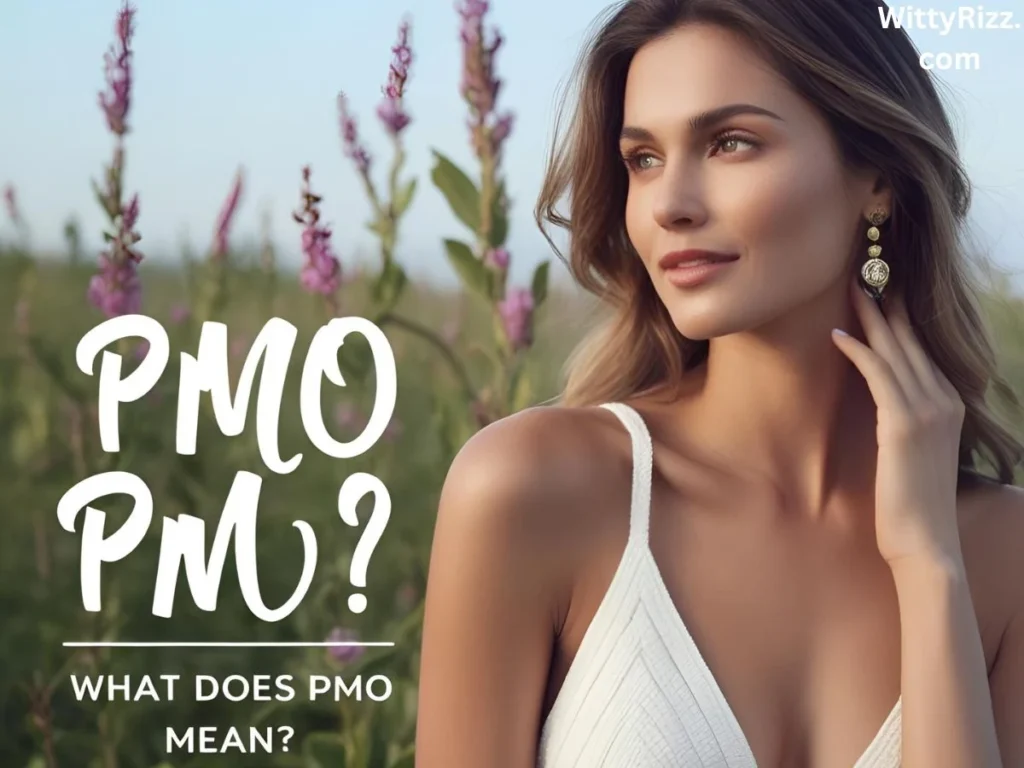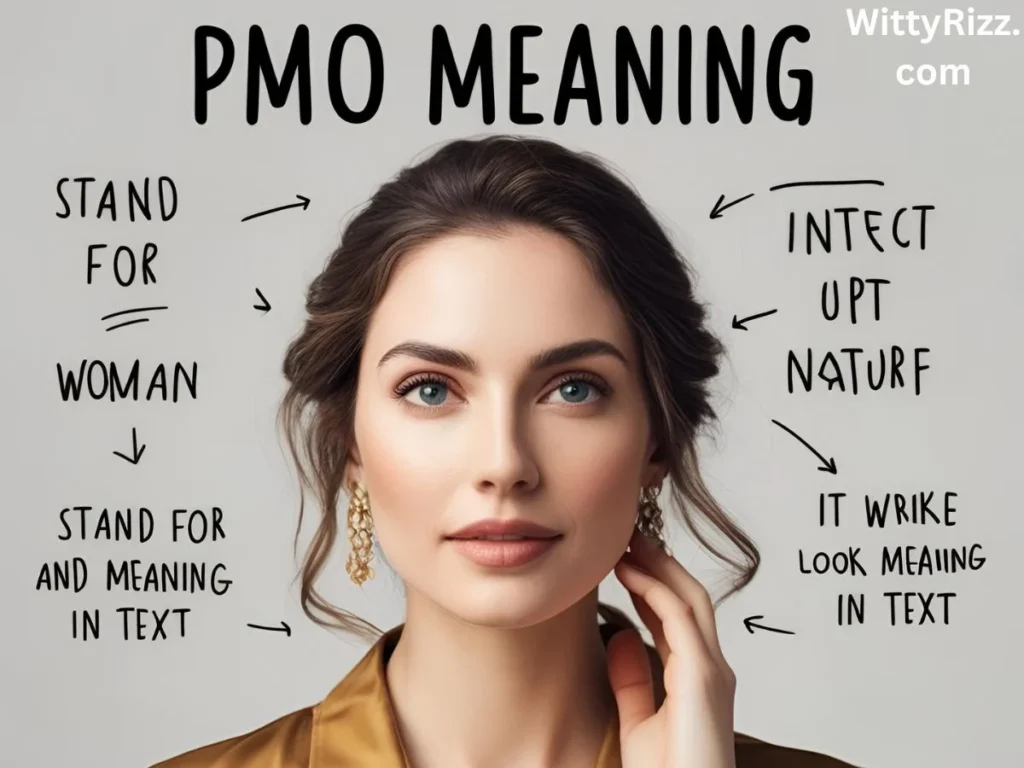In today’s fast-moving world of texting, instant messaging, and online communication, abbreviations and acronyms have become part of everyday conversation. One such abbreviation you might have come across is PMO. But what exactly does PMO mean?
And how can you respond or use alternative phrases depending on the situation, tone, and formality?
In this article, we’ll dive deep into the meaning of PMO, explore its usage, and offer polite, professional, and casual alternatives that you can use effortlessly in real-life conversations.
Whether you’re chatting with friends, sending a business email, or messaging your boss, this guide will ensure you sound appropriate, polished, and natural.
What Does PMO Mean?

PMO typically stands for “Put Me On” in casual texting language. It’s often used when someone is asking for a recommendation, introduction, or hookup — usually to music, information, people, or events.
Example:
“Hey, PMO to that new artist you were talking about!”
In more professional settings, PMO might also stand for “Project Management Office,” referring to a department within an organization that defines and maintains project management standards. However, for the scope of everyday texting and casual conversations, “Put Me On” is the dominant meaning.
Stand For and Meaning in Text

In texting, the phrase “Put Me On” can mean a few things based on context:
- Recommendation: Requesting suggestions for music, shows, or anything new.
- Introduction: Asking to be introduced to someone.
- Opportunity: Seeking help in getting a chance, such as being put onto a project, event, or gig.
Thus, when someone says “PMO” in a text, they’re looking for you to connect them with something exciting or useful.
Why Understanding Tone and Context Matters
Choosing the right phrase isn’t just about replacing words. It’s about matching the energy and intent of the conversation.
- In casual conversations, you can sound more relaxed.
- In professional environments, you must maintain formality and clarity.
- In friendly or polite exchanges, you might want to sound warm and approachable without being overly familiar.
Using the wrong tone can make your message seem abrupt, confusing, or even rude. That’s why having a collection of alternatives at your fingertips is so useful.
11 Best Alternatives to “PMO” (Put Me On)
Here are 11 well-crafted alternatives to “PMO,” each with explanations, tones, and examples, so you can pick the perfect fit for any conversation.
1. Can You Recommend Something?
Tone: Polite, casual, and professional.
When to use: Asking for suggestions in a friendly or professional way.
Example:
“Hey, can you recommend something new to listen to? I’m looking to freshen up my playlist!”
2. Could You Introduce Me?
Tone: Formal and respectful.
When to use: When seeking introductions to people or groups professionally.
Example:
“I noticed you know the event coordinator — could you introduce me?”
3. I’d Love Your Suggestions!
Tone: Warm and enthusiastic.
When to use: When you want to seem open and positive.
Example:
“I’m traveling to Italy soon — I’d love your suggestions for must-visit spots!”
4. Hook Me Up!
Tone: Very casual and playful.
When to use: Among close friends or peers.
Example:
“You’re going to the backstage party? Hook me up!”
5. Mind Sharing Some Recommendations?
Tone: Courteous and semi-formal.
When to use: In emails, messages, or polite conversations.
Example:
“Mind sharing some recommendations for local coffee shops? I’d appreciate it!”
6. Can You Connect Me?
Tone: Professional and concise.
When to use: In networking or business settings.
Example:
“Can you connect me with the hiring manager you mentioned?”
7. I’d Appreciate an Introduction
Tone: Professional and deferential.
When to use: When you want to show gratitude even before the favor is done.
Example:
“If possible, I’d appreciate an introduction to the marketing director.”
8. Any Tips You Can Share?
Tone: Friendly, casual, and welcoming.
When to use: When you’re asking for informal advice or inside information.
Example:
“I’m new to the area — any tips you can share for finding a good gym?”
9. Let Me In on It!
Tone: Fun and energetic.
When to use: In light-hearted conversations with friends.
Example:
“I heard you’re planning something cool. Let me in on it!”
10. Would You Mind Recommending Something?
Tone: Very polite and formal.
When to use: In professional emails or when messaging someone you don’t know well.
Example:
“Would you mind recommending something for a beginner interested in coding?”
11. Put Me in Touch, Please
Tone: Polished and professional.
When to use: When formally asking for a connection.
Example:
“If you have a moment, could you put me in touch with the project lead?”
How to Choose the Right Alternative Based on the Situation
When choosing which phrase to use instead of “PMO,” consider the following:
| Situation | Best Choice |
|---|---|
| Talking to friends | Hook Me Up, Let Me In on It |
| Professional networking | Could You Introduce Me?, Put Me in Touch, Please |
| Asking for recommendations | Can You Recommend Something?, Any Tips You Can Share |
| Seeking advice politely | Mind Sharing Some Recommendations?, I’d Love Your Suggestions! |
Tip:
Always think about your relationship with the person. If it’s casual, you can afford to be more playful. If it’s formal, stay polite and concise.
Why Using Alternatives to “PMO” Matters
Though “PMO” is popular among younger crowds and social circles, it’s not always understood by everyone, especially in professional spaces.
Using clear and thoughtful language helps you:
- Build stronger connections with your audience.
- Avoid misunderstandings that could happen with slang.
- Maintain a professional image when necessary.
- Show respect for the other person’s time and attention.
Conclusion
In communication, clarity and tone are everything. While PMO (“Put Me On”) is a fun, quick way to ask for help or recommendations, there are so many richer and more versatile ways to express yourself depending on your setting.
Whether you’re shooting a quick message to a friend or emailing a potential business partner, knowing how to phrase your request properly can open doors you didn’t even realize were there.
Language is like fashion — it’s not just about what’s trending but also about what fits you and the occasion best

